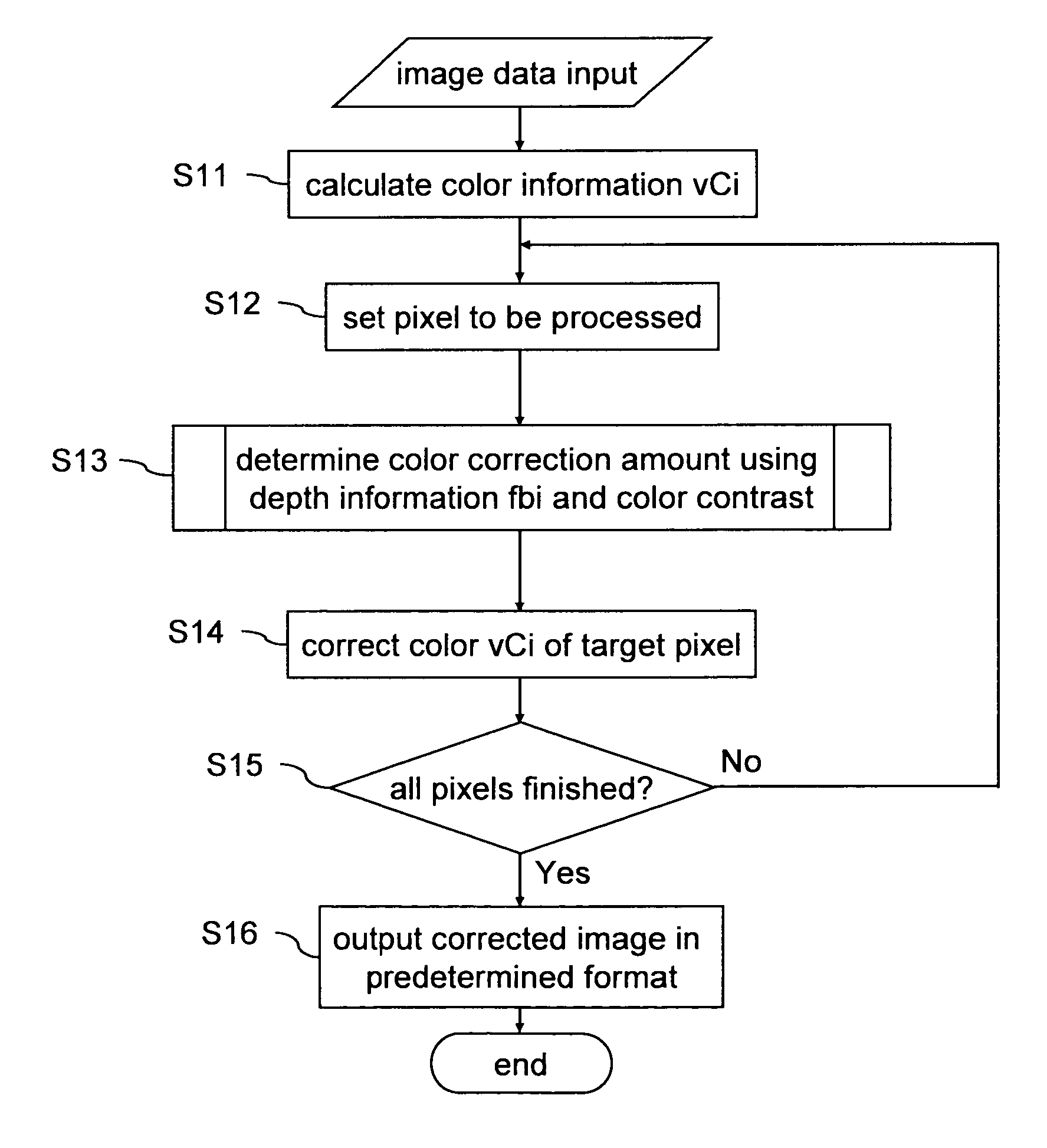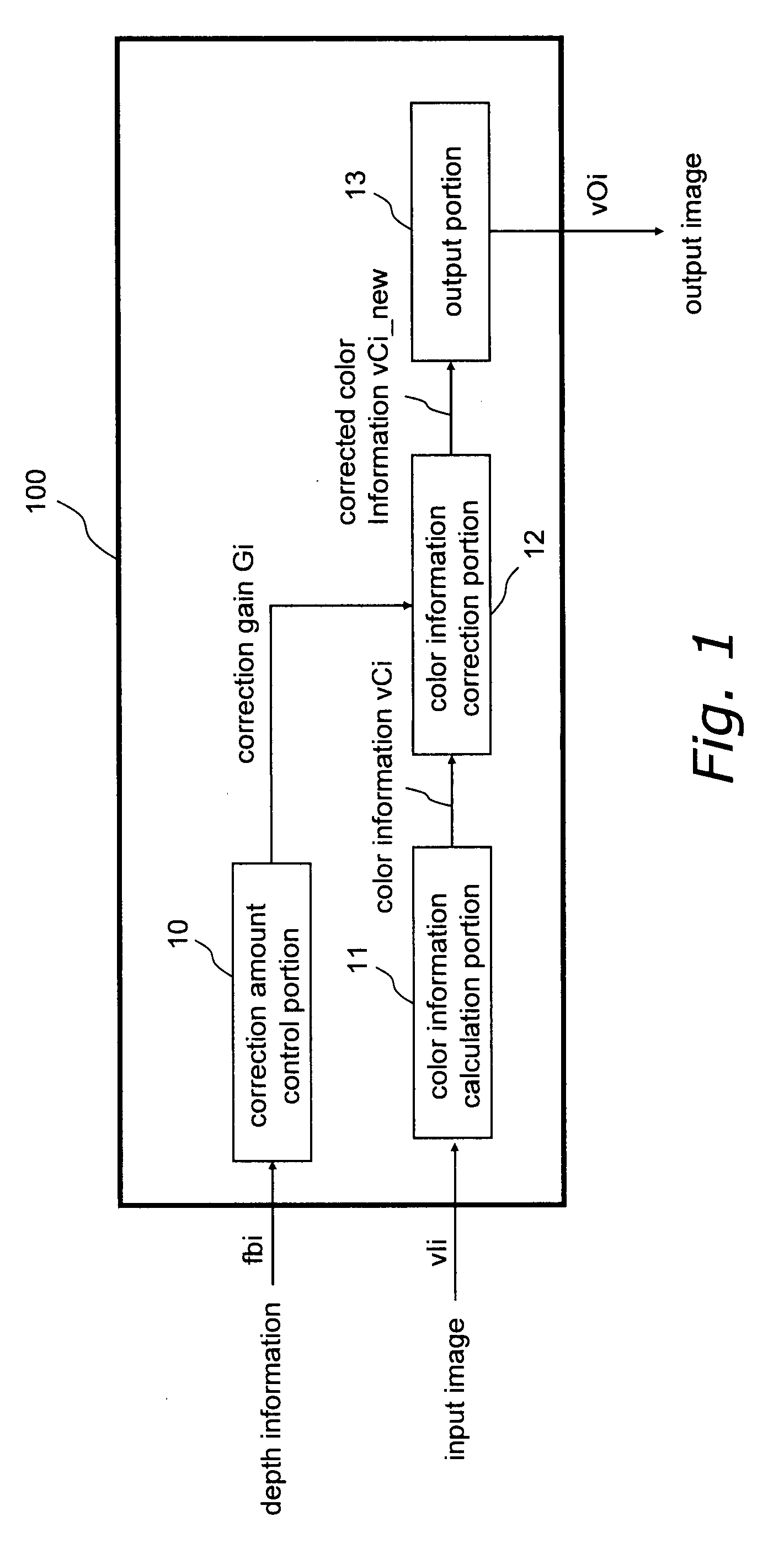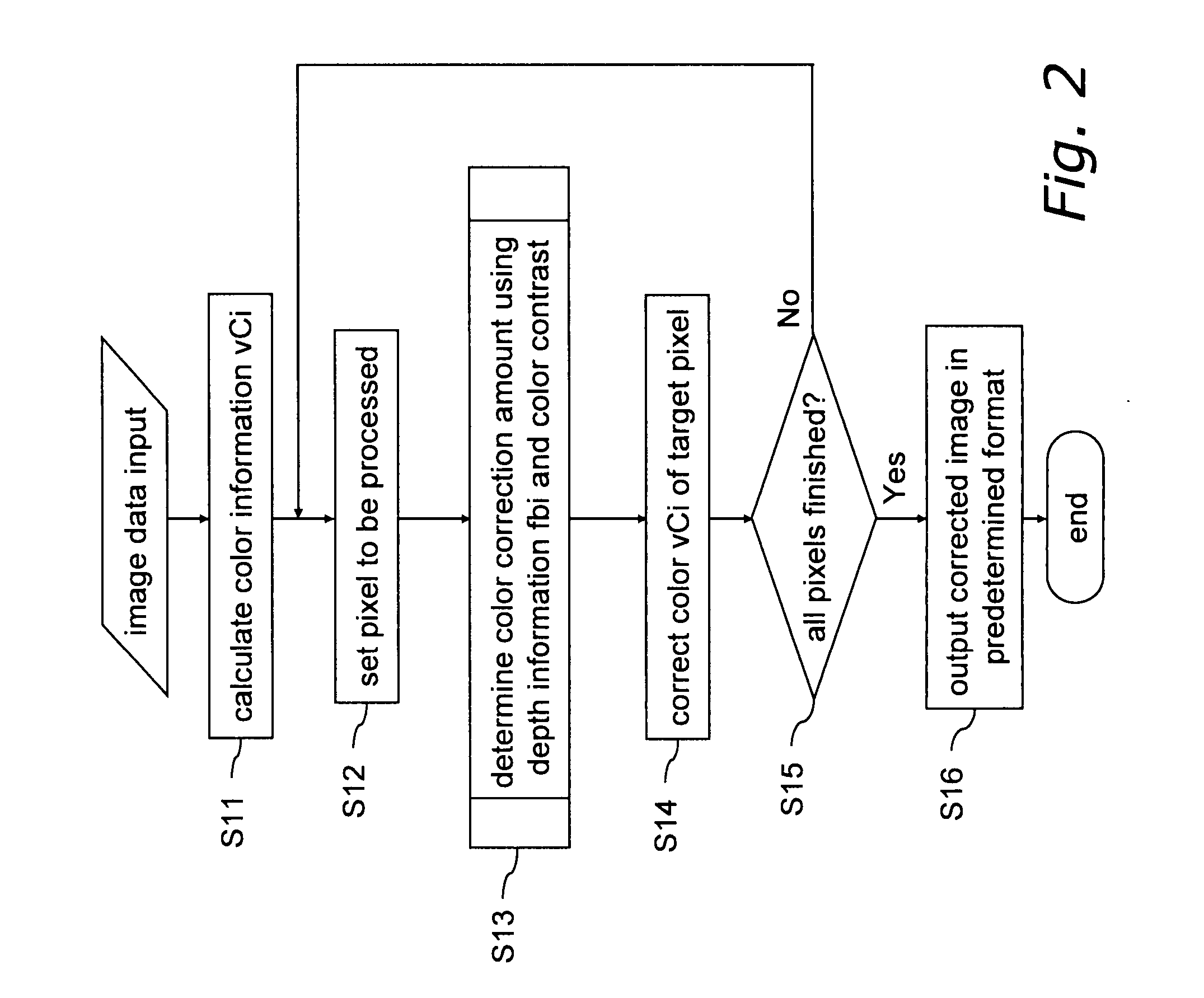Image processing device, image processing method, program, storage medium and integrated circuit
a technology of image processing and image processing method, which is applied in the field of image processing methods, image processing devices, programs, storage media, and integrated circuits, can solve the problems of large degree of dependence on image, increased cost of special devices, and prone to impact on the precision with which the threshold is determined, so as to enhance the feeling of depth and improve the feeling of depth
- Summary
- Abstract
- Description
- Claims
- Application Information
AI Technical Summary
Benefits of technology
Problems solved by technology
Method used
Image
Examples
first embodiment
[0223] First, an image processing method and an image processing device 100 for correcting the color information of a pixel according to the depth information are described as a first embodiment of the invention using FIGS. 1 through 11.
[0224]FIG. 1 shows the configuration of the image processing device 100 according to the first embodiment. FIG. 5 shows the configuration of a color information correction portion 12. FIG. 2 shows a process flowchart of the image processing method of the first embodiment. FIG. 6 shows a flowchart of the color correction portion and a flowchart of color contrast amount data calculation.
[0225] The invention is a device that corrects color information in an image by processing the image data, and for example can be installed in image-capturing devices such as digital still cameras and digital video cameras, image editing devices for editing digital images that have been obtained with such image-capturing devices, portable telephones, car mobile device...
second embodiment
[0284] An image processing method and an image processing device for correcting color information in a pixel according to the depth information are described as a second embodiment of the invention using FIGS. 12 through 14.
[0285] The image processing device according to the second embodiment has the same configuration as the image processing device 100 according to the first embodiment, and the two differ only in that in the image processing device of this embodiment, the color information correction portion 12 of the image processing device 100 has been substituted by a color information correction portion 2012. In the image processing device of this embodiment, sections that are the same as those of the image processing device 100 have been assigned the same reference numerals as before and will not be described. It should be noted that the only difference between the image processing device of this embodiment and that of FIG. 1 is that the color information correction portion 2...
third embodiment
[0308] Using FIGS. 15 through 19, a third embodiment of the invention is described with regard to an image processing method and an image processing device 300 for correcting color information in pixels according to the depth information.
[0309]FIG. 15 shows the configuration of the image processing device 300. FIG. 16 shows the configuration of a color information correction portion for hue 42.
[0310] The image processing device 300 is primarily made of a color information calculation portion 11 that calculates color information vCi from an input image signal vIi, a hue information calculation portion 40 for calculating hue information Hi from the input image signal vIi, a correction amount control portion 10 for determining a correction gain Gi from the depth information fbi, a color information correction portion for hue 42 that corrects the color information vCi that is output from the color information calculation portion 11 based on the correction gain Gi that has been determi...
PUM
 Login to View More
Login to View More Abstract
Description
Claims
Application Information
 Login to View More
Login to View More - R&D
- Intellectual Property
- Life Sciences
- Materials
- Tech Scout
- Unparalleled Data Quality
- Higher Quality Content
- 60% Fewer Hallucinations
Browse by: Latest US Patents, China's latest patents, Technical Efficacy Thesaurus, Application Domain, Technology Topic, Popular Technical Reports.
© 2025 PatSnap. All rights reserved.Legal|Privacy policy|Modern Slavery Act Transparency Statement|Sitemap|About US| Contact US: help@patsnap.com



